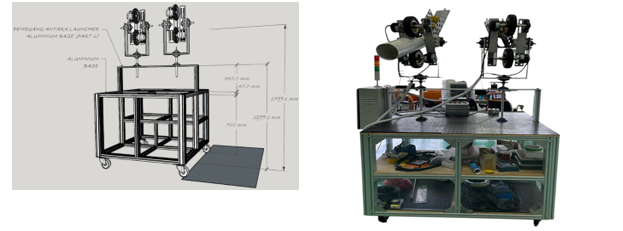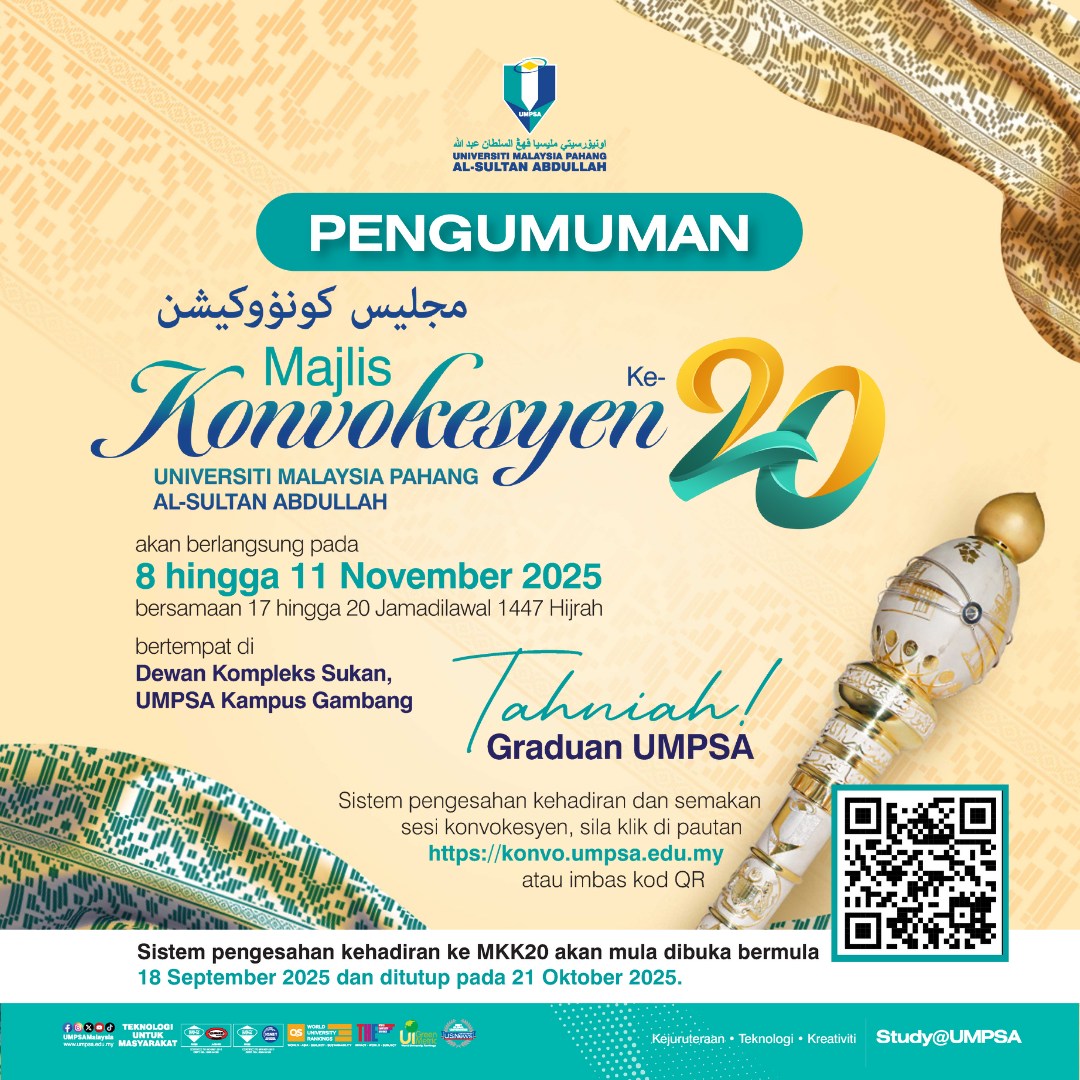Development of Automatic tekong Launcher System
The historical evidence indicates that sepak takraw was played in the 15th century in Malaysia, and today, it stands as one of the most popular sports in the country. Despite being the birthplace of sepak takraw and a regular participant in prestigious events like the Commonwealth Games, Asian Games, and Southeast Asian Games, Malaysia faced a setback when the National Sports Council (MSN) removed sepak takraw from its list of national core sports in 2017 due to poor performance.
Efforts to revive the sport included initiatives like the creation of the Sepak Takraw League (STL). However, a significant challenge faced by the national team was the difficulty in receiving serves from opponents’ tekong, particularly those from Thailand that is known for their fast and confusing servis kuda. Additionally, the nature of sepak takraw training, requiring at least two players, poses limitations for individual practice, especially in serving and kicking without a partner.
In response, a solution is proposed—the development of an Automatic tekong Launcher System. This system aims to launch pre-loaded balls resembling servis kuda at an average velocity of 55 km/h towards designated targets (sasaran 1-6) using two launchers. The areas marked with numbers 1-6 represent the standard targets aimed at by the tekong in the game (Figure 1). These targets denote specific locations that serve as the focal points when a tekong executes a serve or servis kuda in sepak takraw. By specifying these targets within those areas, the Automatic Tekong Launcher System will be designed to ensure precise ball launches towards the designated targets, enhancing training accuracy in receiving serves from opponents. The project includes setting the ball trajectory to the target through a programmable logic controller (PLC) and computer application. Emphasis will be placed on designing and developing the control system using a PLC, ensuring precise ball transfers when triggered by a computer. The project also involves creating a Ladder diagram and programming for the PLC. Anticipated as a game-changer for sepak takraw players, this innovative equipment is expected to significantly impact training patterns, particularly in receiving serves from opponents’ tekongs.
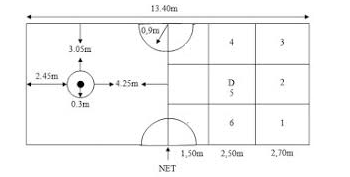
Design Concept for body frame, launcher, power input and system controller
The development of the Automatic Tekong Launcher System involves building the body frame, launcher, and control system (Figure 2). The body frame is constructed using aluminium profiles sized 2′×2′ and 4′×4′ to accommodate two launchers at the top and equipment storage space at the bottom.
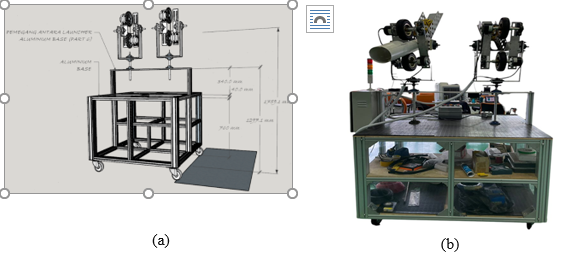
Meanwhile, the launcher is made of aluminium and machined using CNC milling to accommodate gear, tyre, bearing, solenoid and 2 DC motors each (Figure 3). The 24V DC motors with a capacity to rotate up to 2800 rpm are used to drive the wheel with a diameter of 250 mm.
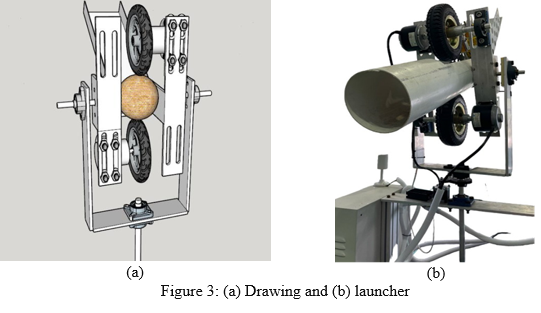
Furthermore, the system is equipped with 2 units of 30A AC to DC converters to supply electricity to 4 units of 20A DC motors, 2 units of 5A DC stepper motors, and a tower light with a buzzer.
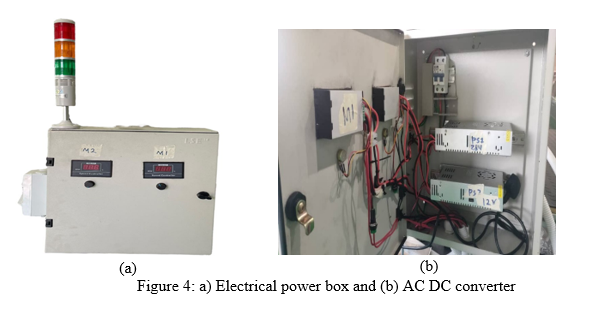
Finally, after the mechanical components, such as the body frame, launcher, and power supply, are assembled, the Automatic Tekong Launcher System is integrated with a PLC system for automatic control (Figure 5). The PLC is used to control the ball speed, throwing direction, and control launch sequence of the sepak takraw ball from the storage. The PLC also controls the joystick input for semiautomatic control of launching and direction (Figure 6).
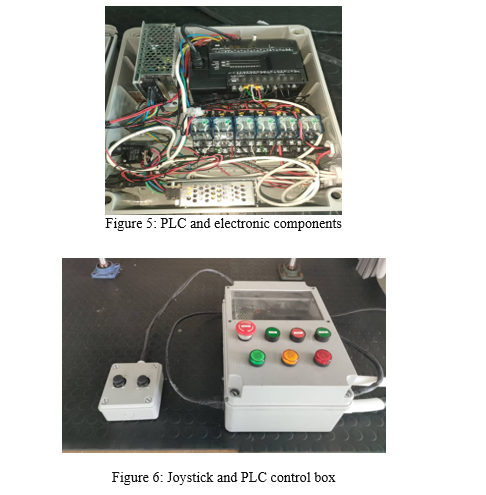
In conclusion, the Automatic Tekong Launcher System represents an integration of mechanical and electrical components. With a sturdy aluminium frame and precision-machined launcher, it is equipped to handle the task effectively. The power supply system ensures adequate electricity for the operation of multiple DC motors and stepper motors. By incorporating a PLC system, the launcher can be controlled automatically, enabling precise adjustments to ball speed and throwing direction. Additionally, the inclusion of joystick control offers semiautomatic functionality, enhancing user interaction and flexibility. Overall, this system promises efficient and reliable performance in sepak takraw ball launching.
The researchers are from the Centre for Advanced TVET, Universiti Malaysia Pahang Al-Sultan Abdullah (UMPSA).

By: Ts. Muhammad Adib Shaharun, Ts. Tarmizy Che Kar, Ts. Mohd Sazali Salleh, Ts. Mohd Idzwan Rosli Mohd Ramli And Ts. Wan Hassan Wan Hamat
- 357 views


